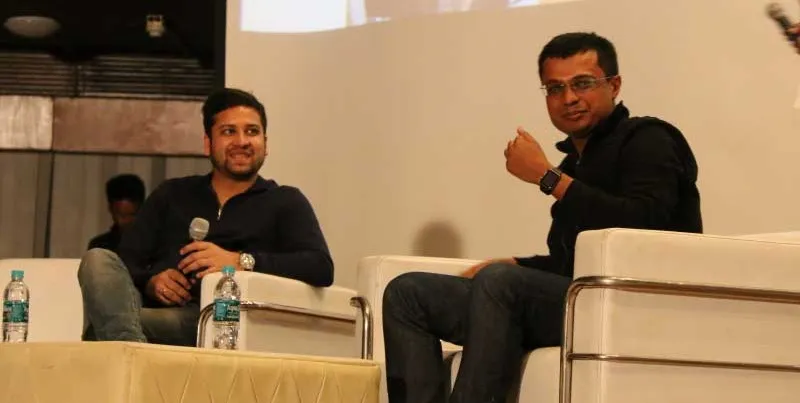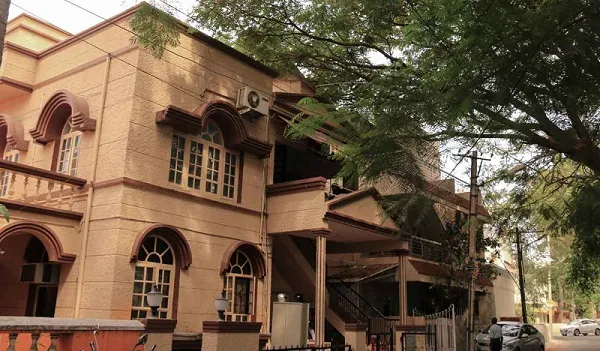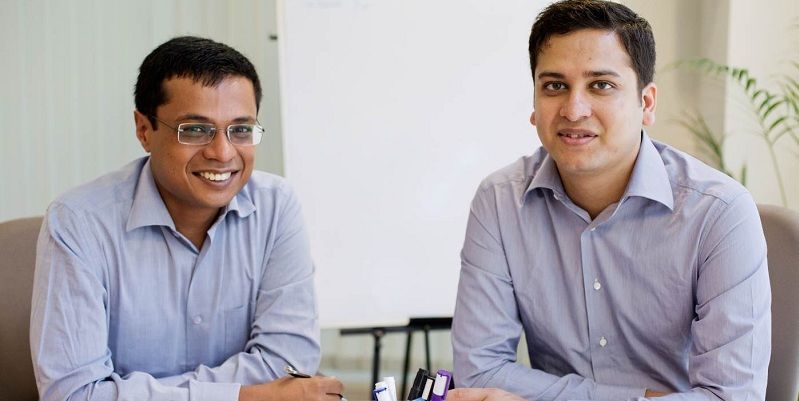If not for Lady Luck, Sachin Bansal and Binny Bansal might never have met or built Flipkart
If Sachin Bansal and Binny Bansal had gotten better marks they might never have met and Flipkart, the company the duo founded in 2007, might never have come to life.
What if Sachin had settled for the Physics course at the Punjab Engineering College of Chandigarh when he did not make the cut in the IIT entrance exam in 1999 and never joined IIT-Delhi, which is where he eventually met Binny?
What if both Sachin and Binny had got great scores in their final year BTech projects and did not have to spend a whole summer at IIT-Delhi to meet course requirements, which is how they crossed paths?
But Lady Luck had plans for the Bansals, who are not related to each other but hail from Chandigarh. It was in the summer of 2005 when Sachin, then 24, and Binny, then 23, crossed paths while sweating away at IIT-Delhi’s FPGA hardware lab to improve their scores.

While both moved to Bengaluru after completing their courses, they had jobs at different firms. Interestingly, Google rejected Binny twice.
Sachin joined Amazon first and a little over a year later, in 2007, Binny joined the same team as his future business partner. It was during this stint that the thought of starting up crossed their minds. Remember, this was still 2007 when entrepreneurship was not yet cool.
Direct ecommerce was not their first idea — it was to launch a price comparison site. But market research led them to the idea of an ecommerce site and thus Flipkart was born in October 2007. And the rest is Indian startup and ecommerce history.
With Walmart acquiring Flipkart, the latter is now valued at over $20 billion and the two founders are multi-billionaires. When they started out, their parents gave them Rs 10,000 a month as allowance for almost 18 months. They had invested Rs 2 lakh each from their savings.
It was in their two-bedroom flat in Koramangala, Bengaluru that the duo, who share a common interest in computer science, built the first version of the site, with just two computers.

People who know them and have worked with them say they have different temperaments. Many say Sachin is quick to take offence, while Binny isn’t. Sachin also has a dry sense of humour — the description on his Linkedin profile for his role as CEO of Flipkart reads as “Odd jobs”. Sachin is said to be more intuitive, while Binny is a data junkie.
Both, primarily techies at heart, have always been quite wary of the media. This reporter remembers how Sachin gave short, crisp answers when she interviewed him for the first time in 2012 but later began opening up more, giving detailed answers and even speaking about how his son thought televisions would also become touchscreen soon.
Sachin, as CEO, was more often the face of Flipkart. Binny, who was COO until 2016, would join Sachin for joint interviews during important occasions, like the Myntra acquisition in 2014. In informal interactions, Binny opened up more easily, like him joking to this reporter that he had become a complete Myntra man as he was wearing the site’s private label jeans and was carrying a Myntra brand wallet for the event that announced Flipkart acquiring the fashion e-tailer.

There is also a streak of sentimentality that sometimes reflects in how the company communicates and operates even now. For instance, it was in 2007 that Flipkart moved to its first proper office — a bungalow in a quieter lane of Koramangala. Today, the company’s headquarters is housed in 30 floors across three buildings, which translates to 8.3 lakh square feet. Yet, the company has retained that first office. Some teams retreat to this office every now and then. A few months ago, when Sachin was building the Billion private label brand for Flipkart he chose to base his team in this bungalow. The bungalow’s landlord has said in the past that Sachin used to pay the rent in person for many years.
However, it isn’t sentimentality that helped the duo make Flipkart an industry leader. With early innovations like Cash-on-Delivery (CoD), Flipkart was able to win over customer trust.
When Flipkart faced FDI scrutiny, the company shifted to a marketplace model at least on paper. It raised large sums — initially in the tens and hundreds of millions — that were unheard of in the Indian startup ecosystem. It raised $1 billion after Amazon launched in India and Flipkart continued to be ahead of the global ecommerce major in terms of overall market share.
It also acquired companies to speed up growth, in the process bringing on board some of their early superstar employees like Ankit Nagori, who now runs CureFit, and Sameer Nigam and Rahul Chari, who run Flipkart subsidiary Phone Pe. Flipkart became the first ecommerce company in India to reach $1 billion in GMV and also the first to raise $1 billion in funding.
But errors in judgement were also made along the way. In 2015, Myntra went app-only and Flipkart was on its way to become app-only with disastrous effects as sales at Myntra started dropping. Many saw this decision as being driven by Sachin.
Flipkart had hired many senior executives from Silicon Valley in 2015 at hefty pay packages, but many left within a year. There were rumours of culture clashes and a mismatch of expectations, resulting in confusion in the ranks.
In January 2016, Sachin was replaced by Binny as CEO, with the former becoming Executive Chairman, a post he held until the Walmart acquisition. Sachin in an internal town hall at that time admitted that the change in role was linked to performance.
2016 continued to be a bad year with Flipkart facing a funding drought, seeing its market share erode, and Amazon gaining. Its then single biggest shareholder, Tiger Global, brought back Kalyan Krishnamurthy to oversee operations. He oversaw a turnaround and a blockbuster festive sale and in January 2017 was appointed Flipkart CEO, with Binny becoming Group CEO.
The Walmart acquisition means Sachin has completely exited Flipkart. While Binny stays on for now, it is a matter of time before he too exits. What will the two do next? Spend time with their children — Sachin has a son with his dentist wife Priya, while Binny has twins with his homemaker wife Trisha?

A survey we conducted among select startup founders and investors might help them with ideas. Over 50 percent of respondents said they should become full-time investors. The two had registered a venture called Sabin Advisors last December, which could be an investment vehicle. About 30 percent of our respondents said they should start up again.
The two are still young — Sachin’s 36 and Binny’s 35. They built the $20 billion valued Flipkart in 10 years. What will they build in the next 10 years?









![[Funding alert] Insurtech startup Vital raises $3M in pre-Series A round led by BLinC Invest](https://images.yourstory.com/cs/2/b87effd06a6611e9ad333f8a4777438f/Image7pk7-1623852700230.jpg)

